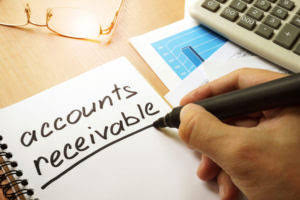Those typically include costs that stem from renting office space, employee salaries, and benefits packages. It’s tempting to write off « burn rate » as cute startup jargon or a funny subplot on the television series Silicon Valley. But a correctly calculated burn Accounting For Architects rate is crucial for the responsible growth, planning, and success of a business. Your gross burn rate is the total amount of cash you spend each month. Any number of factors—many of them outside of your control—can lead to an unexpected downturn in revenue and cash flow in your business. When you address your burn rate and cash runway proactively, while things are going well in your business, you will be better able to weather any storms your business encounters.
What is a Good Cash Burn Rate?
- Burn rate explains how quickly your business is using up its cash reserves.
- Burn rate is also important to startups looking for funding that don’t have investors yet.
- DigitalOcean offers a suite of cloud computing solutions designed for startups like yours.
- If you want to reduce your burn rate, take a close look at your monthly expenses and see where you can cut back.
- It’s a metric that helps your startup (and investors) understand exactly when you’ll need to raise more funds before your business stalls out.
Cash flow is a major factor in whether or not a business will succeed, and lack of cash flow is the reason 82% of businesses shut their doors for good. I work with both bootstrapped and VC-backed SaaS companies to develop scalable inbound marketing strategies. It depends on your business model, how much money you have in the bank, and your growth plans. In fact, a study by CB Insights showed that 38% of startup failures are due to running out of cash. If you want to learn more about what burn rate is and why it matters to SaaS founders and investors, you’ve come to the right place. This can include office costs (downsizing office spaces to reduce rent) and contractors (outsourcing work when possible), among others.
How to calculate burn rate?
As an early-stage startup, setting benchmarks and projections for burn rate will only help you to measure and reach your goals more effectively. This is especially important to track when your revenue is down, as a loss in revenue without any change in spending will result in a higher burn rate for that time period. A positive burn rate means that the business spends more than it earns, and a negative burn rate means that the business spends less than it earns. A negative burn rate could be achieved for instance if the business were to receive external funding. In the 2nd scenario, the company has twice the number of months in cash runway because of the $5,000 in cash inflows coming in each month.
How to Calculate Burn Rate
Another way to calculate the burn rate might be — to divide your monthly expenses by your current cash balance and multiply by 100 to get a percentage. From the perspective of an investor, the lower the burn rate, the more ideal the investment appears. Even if analysts project that a company is going to run out of funds early, an investor can still fund them. This company may simply need better management or long-term funding plans bookkeeping and payroll services to lower production costs.
It’s all about cutting costs (and preferably increasing revenue at the same time), which should specifically target discretionary spending first. Burn rate is an essential business metric, especially for startups and businesses with venture capital funding, for a few different reasons. Businesses use burn rate calculations to build projections for their cash runway, which is the amount of time they have until they deplete their cash reserves.
The monthly burn rate is the rate at which a company spends its cash reserves in a given month. To calculate the monthly burn rate, subtract the ending cash from the starting cash and divide the result by the number of months in the given period. Both gross and net burn rates are essential tools for understanding a company’s financial health and long-term viability. Monitoring these metrics can provide valuable insights into operational efficiencies and guide decision-making when it comes to resource allocation and growth strategies.
Learn what Burn Rate is, How it is calculated, Examples and how you can reduce burn rate.
If you want to reduce your burn rate, take a close look at your monthly expenses and see where you can cut back. This might include renegotiating contracts with suppliers, reducing marketing spend, or finding ways to reduce your customer acquisition costs. So, if you’re a startup or VC-backed company, you’re probably eager to understand how your burn rate relates to other businesses in your field or industry. Unfortunately, there’s no golden ratio for burn rate vs. cash runway or the amount of money you have in the bank.
- Your owner’s draw is the money you take out of your business to pay yourself.
- Let’s say you run a business and want to review your burn rate for the first quarter of the year.
- Using the figures from our example in the previous section, the ending balance for the quarter was $80,000 with a monthly burn rate of $40,000.
- Unfortunately, many small business owners don’t understand what burn rate is or how to calculate it.
- Its cash balance on March 31, the last day of the quarter, is $100,000.
How do you calculate burn rate?
Typically, burn rate calculates how quickly a company will go through its startup capital before becoming cash flow positive. However, all businesses—regardless of their stage in the business life cycle—can benefit from knowing their burn rates. Burn rate is most often a consideration for young life sciences or technology companies without profits and revenue in some cases. It would mean that a company is spending $1 million per month if it’s said to have a burn rate of $1 million.
How to calculate burn rate
Read on to learn how to calculate burn rate, burn rate benchmarks, and more. You also spend about $200,000 on office rent each month and another $50,000 on miscellaneous expenses like internet service or food in the office kitchen. To fund all this spending every month, you take out a loan with monthly payments of $1 million to cover salaries and other expenses until your seed funding comes through later in the year. Accounti handles essential financial tasks such as accrual book-keeping, invoicing, contract management, reconciliations, payments and financial reporting for fast growing US-based companies.




